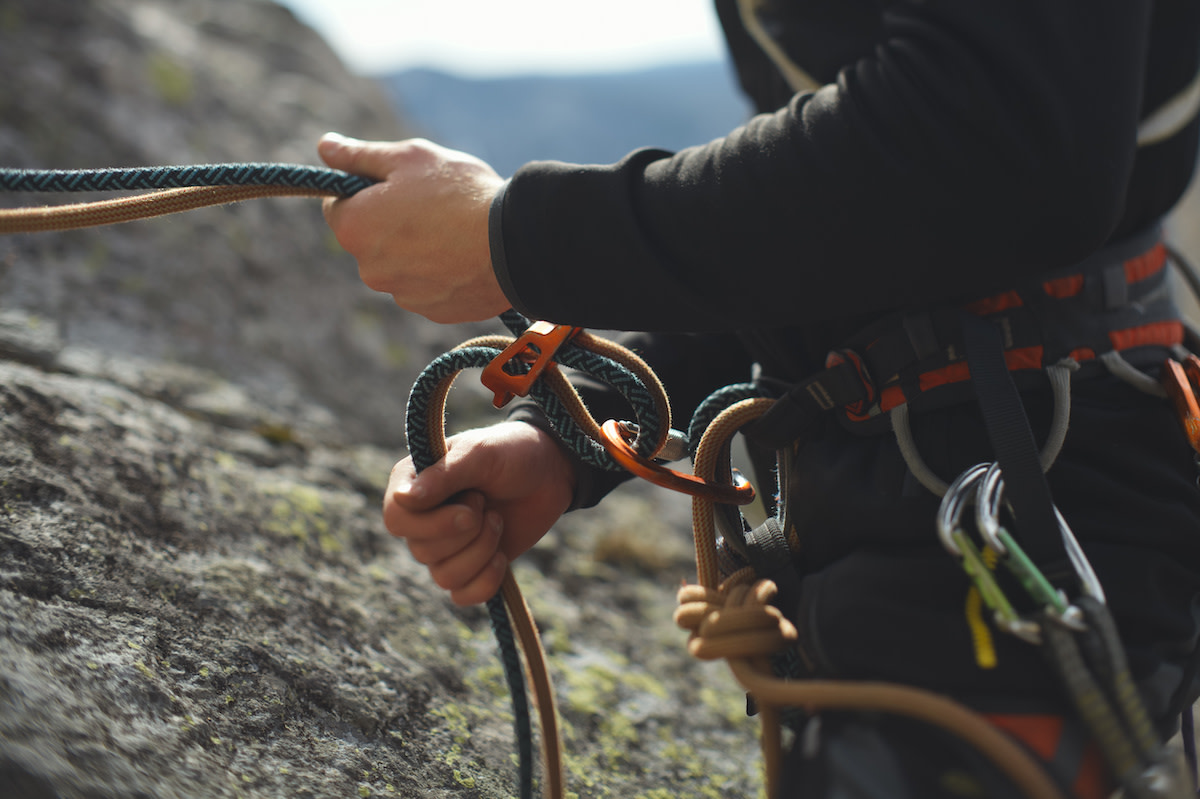How to Tell the Difference Between Dynamic and Static Rope
Written by MasterClass
Last updated: Oct 15, 2021 • 4 min read
Climbing ropes come in two main styles: dynamic and static. Each type of rope has its own purpose and specific use for climbers, and should be used accordingly.
Learn From the Best
What Is Static Rope?
Static rope, or low-elongation rope, is a fixed line of rope that is designed to have a minimal amount of stretch. In climbing, static rope is designed for strong and steady holds that are often used in caving, canyoneering, abseiling, rappelling, or rescue work.
Static climbing rope will not have any “bounce” to it when a climber is rappelling, which can help to increase the level of control that they have during a descent. Semi-static ropes, which have an elasticity rate of up to 15 percent, are generally recommended for top-roping, because they can absorb and support weight as it descends while providing more control than dynamic ropes.
What Is Dynamic Rope?
Dynamic climbing rope is designed with a high degree of elasticity to help protect a climber from injury in the event of a fall. This type of climbing rope is often used in rock climbing, lead climbing, or mountaineering. Dynamic rope is typically used for top-rope because there is some degree of give to it. Here are the three types of dynamic rope.
- 1. Single ropes: Dynamic single ropes are designed to be used on their own rather than with other ropes. Thick single ropes are most commonly used for big wall climbing, top-roping, or gym climbing. Mid-range single ropes are better for sport climbing and other general use. Thin single ropes are lightweight which makes them a good choice for multi-pitch climbing, which is an ascent with stops at multiple belaying stations.
- 2. Twin ropes: Twin ropes are two ropes that function together as a single rope to provide backup if one rope fails. This type of rope is popular for activities like ice climbing and traditional climbing. Twin ropes can also provide plenty of slack for rappelling, allowing descenders to go farther than they would with single ropes. Dynamic ropes are typically not used for rappelling, but twin ropes could work in situations that require lots of slack. Twin ropes have a slightly smaller rope diameter than half ropes.
- 3. Half ropes: Half ropes involve two ropes that run through a belay device to create friction to prevent a climber from falling too far. They can also provide a redundant rope for safety. Half ropes can reduce rope drag and abrasion, and are also good for ice climbing, mountaineering, and trad climbing.
What Are the Similarities Between Dynamic and Static Rope?
Here is an overview of some of the similarities between static and dynamic rope.
- 1. They’re both used for safety. Both dynamic and static ropes are used for a variety of physical activities to keep climbers, rappellers, and equipment haulers safe in different cases. Static rope provides control when doing things like hauling objects, transporting injured climbers, and rappelling. Dynamic rope is often used for top-roping and often provides a backup rope in case one fails.
- 2. They’re usually made from the same material. Although their degrees of elasticity vary, static and dynamic climbing ropes are made from a nylon fiber blend with a kernmantle design. This means that the interior core rope is protected by an exterior sheath.
- 3. They both require proper rope care. Regardless of the type of rope you choose, maintaining your ropes is paramount to climber safety. Always properly clean and store ropes after climbing to protect them from any adverse wear and maintain their durability. Before you go on any climbing expedition, inspect your ropes for any signs of wear and tear to make sure they’re sound enough to use in your expedition.
What Are the Differences Between Dynamic and Static Rope?
There are several different characteristics and uses of dynamic and status rope. Here is an overview of some of those differences.
- 1. Their elasticity. Static ropes are not designed to stretch under heavy loads, while dynamic rope stretches to protect climbers from the force of impact. Most static elongation is at around five percent or less, while dynamic elongation is at least 30 percent.
- 2. Their color. Though it may vary by brand, most static ropes come in black and white while dynamic ropes are often more shiny and colorful.
- 3. The variety. Dynamic ropes come in different rope lengths, diameters, and stretch levels, providing more options for climbers in comparison to static ropes.
- 4. Their use. Dynamic and static ropes usually have their own distinct purposes. Dynamic rope is better for activities that carry a risk of falling, such as climbing, while static rope is a better choice for haul lines or activities requiring more controlled ascents and descents like rescue operations or rappelling. Arborists also use a static line to study and manage trees.
Before You Start Climbing
Climbing is a high-impact activity with an elevated risk of serious injury. Practice, proper guidance, and extensive safety precautions are essential when attempting a climbing pursuit. This article is for educational and informational purposes only, and is not a substitute for professional instruction or guidance.
Ready to Give “On the Rocks” a Whole New Meaning?
Take your climbing mastery to new heights with the MasterClass Annual Membership and exclusive video lessons from Alex Honnold and Tommy Caldwell, two of the world’s most accomplished climbers. Together they’ll help you get a grasp on climbing holds, balance, footwork, and more, plus teach you the ins and outs of ethical outdoor exploration.
